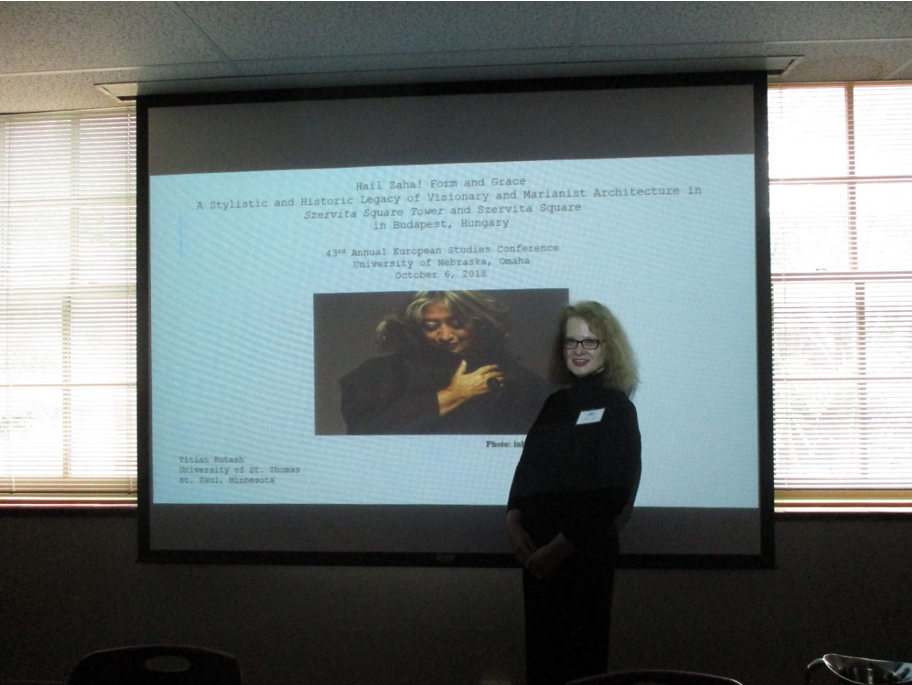 Titian Butash is a graduate student in the Master of Arts in Art History program. Titian presented research on Zaha Hadid’s ‘Szervita Square Tower’ at the 43rd Annual European Studies Conference earlier this month.
Titian Butash is a graduate student in the Master of Arts in Art History program. Titian presented research on Zaha Hadid’s ‘Szervita Square Tower’ at the 43rd Annual European Studies Conference earlier this month.
After reading the acceptance letter, I excitedly made the arrangements to travel to the University of Nebraska in Omaha to present my research at the 43rd Annual European Studies Conference scheduled for October 4 – 6, 2018. My topic was the work of the late British-Iraqi architect Dame Zaha Hadid. Through the efforts of Megan Sclater of the architect’s London-based office, Zaha Hadid Architects had generously provided me with photographic examples and architectural specifications of the biomorphic and parametric designs of the architect and her business partner, Patrik Schumacher, for my research on the 2006 design of Szervita Square Tower located at Szervita Square in Budapest, Hungary.
The original paper and presentation were first developed in Dr. Victoria Young’s 2015 graduate seminar, Contemporary Architecture. As I processed the invitation and prepared for the trip, I was greatly honored that Dr. Tatyana Novikov selected my paper “Hail, Zaha! Form and Grace: A Stylistic and Historic Legacy of Visionary and Marianist Architecture in Szervita Square Tower in Szervita Square in Budapest, Hungary” for presentation at the 43rd Annual European Studies Conference at the University of Nebraska Omaha.
While my presentation on the neo-Futurist design of Szervita Square Tower focused on the influence of the “modern” designs of the French architect Étienne-Louis Boullée, the utopian and town planning schemes of Claude-Nicolas Ledoux, and the fantastical inked renderings by Giovanni Battista Piranesi of etchings of Roman fictional antique architecture, my original paper, of course, also explored the ideologies of Abrahamic-based religions – the Trinity of Christianity, Judaism and Islam – expressed as vintage surface design motifs on the biomorphic structure. When students in the audience at the European Studies Conference asked me to further discuss my presentation in the context of the influence of these religious ideologies, including the Marianist and baroque architectural legacies also mirrored on the glass surface, it was an unexpected highlight for me. And, thrilled by both their interest in the subject and enthusiastic response to my presentation, I realized that the topic of Szervita Square Tower by Dame Zaha Hadid would still be of continued relevance well into the future.